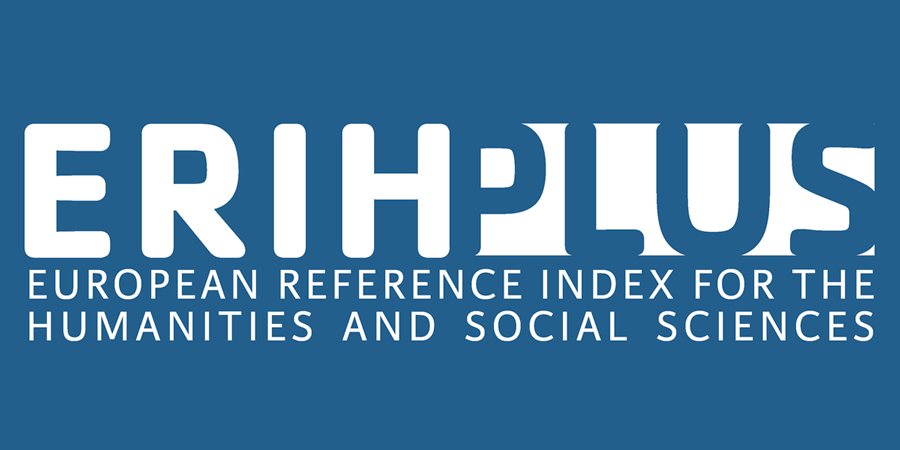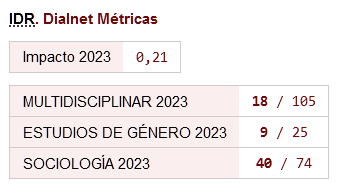Gender Perspective
RELIES is aware that at the academic institutions a model of scientific production and knowledge construction marked by androcentric and patriarchal biases has traditionally prevailed. In an effort to modify this situation in academic and institutional dynamics, we share with our readers and editors our commitment to achieving gender equality. The journal RELIES promotes the incorporation of a gender perspective in the writing and publication of its articles, also advocating the dissemination and visibility of contributions made by women and non-binary people in the scientific field, both past and present, as a mechanism to combat the discrimination, inequality and violence that various groups have systematically suffered in the field of scientific production. To achieve these objectives, the journal RELIES suggests a guide of considerations to be taken into account in the process of drafting scientific papers; peer reviewers will especially take into account that the texts are respectful of inclusive language.
The journal RELIES will also take into consideration those papers that take into account the gender variable in the data collection process. In this way, the creation of sex-disaggregated indicators and gender indicators that can provide specific data on women or non-binary people is encouraged, as well as making comparisons with data that refer to the category of men.
It will be positively valued that the works consider a bibliography that takes into consideration publications which promote gender equality, as well as publications that aim to contribute to knowledge within the framework of gender and that defend equality between human beings.
In research carried out by research teams or in co-authorship, it is recommended to promote gender balance in the people involved and that participation is carried out in an egalitarian and respectful manner, encouraging the values of non-violent communication, collaboration and collective work. The articles must be signed by all the authors, with the full names of each one.
By following these recommendations, the journal RELIES aims to ensure that both our authors and our readership take on and internalise values such as gender equality and equity, the richness of diversity and interdisciplinarity, the value of using participatory and egalitarian methodologies, the commitment to research for the improvement of society, and the importance of critical reflection.
Gender-inclusive language
GUIDE OF GOOD PRACTICES FOR AN INCLUSIVE USE OF LANGUAGE
RELIES, in its commitment to making the work of women and non-binary people in the scientific field more visible, offers its authors a series of ten recommendations to make their contributions more inclusive. This decalogue, whose options are completely valid within the Spanish grammar, serves as a first step to highlight the role of these groups in their respective fields of study without making the male figure the preferred one while writing in Spanish.
As Ana Sánchez Isidoro points out in her course "MD Lenguaje Inclusivo" and as stipulated in the "Apuntes para la igualdad" of the University of Alicante, at RELIES we advise you to consult and follow, as far as possible, the following recommendations:
1.- Avoid the use of the generic masculine when referring to people other than the masculine ones.
2.- Make all people visible in our texts, without excluding anyone.
3.- Double up to include all people in our writing, without abusing or making our texts difficult to understand. Alternate the order of appearance of the masculine and feminine forms when doubling up. If writing in English or other gender-neutral languages, use nouns that are not gender-specific to refer to professions or roles and prefer “they/them” instead of “he/his” when referring to people of indeterminate or unkown gender.
4.-Include slashes or hyphens to add feminine or masculine endings to gendered words, only in short documents, forms or e-mails.
5.- It is recommended that the use of -@, -x and -e should only be used in colloquial texts with a very specific purpose.
6.- Change the wording of sentences using the great linguistic variety that exists in the Spanish language, such as the different types of nouns (collective, epicene, common), passive sentences, omission of the subject or gender neutral words (every, minority, etc.).
7.-Use feminine nouns for positions and professions held by women and which fall within the norm (remember that certain professions have the same word for the feminine and masculine).
8.- Pay attention to images and/or audiovisual messages (advertising, among others) that are not in accordance with the use of inclusive language and that, consequently, contribute to the construction of stereotypes of women or men.
9.- Be consistent in the use of inclusive language throughout the discourse. The text should reflect non-sexist language in all its parts, including and naming all the people to whom it is addressed and referred to.
10.- Know that there are more options to make all people visible in the discourse.
Below, we attach guidelines and directories which may be useful and of interest:
- “Guidelines for gender-neutral language”, Language Portal of Canada, https://web.archive.org/web/20140810140347/https://www.noslangues-ourlanguages.gc.ca/bien-well/fra-eng/style/nonsexistguidelines-eng.html
- “Guidelines for inclusive language”, Linguistic Society of America, https://www.linguisticsociety.org/sites/default/files/Inclusive_Lg_Guidelines.pdf
- Wynn, Elizabeth, “Guidelines for inclusive language”, https://www.babraham.ac.uk/sites/default/files/media-directories/inclusive%20language%20guidelines.pdf
- García Calvente, María del Mar; Jiménez Rodríguez, María Luisa y Martínez Morante, Emilia. “Guía para incorporar la perspectiva de género a la investigación en salud”, Serie Monografías EASP, 48, https://www.easp.es/?wpdmact=process&did=NzIuaG90bGluaw==
- GUÍA METODOLÓGICA PARA INCORPORAR EL ENFOQUE DE GÉNERO EN LAS ESTADÍSTICAS, Instituto Nacional de Estadística, Chile. https://www.mop.cl/GIS/Documents/Guia_metodologica_genero_en_las_estadisticas_INE_2015.pdf
- Uso del lenguaje inclusivo en la producción estadística: una guía práctica desde el enfoque de género. Instituto Nacional de Estadísticas, Chile (INE). https://historico-amu.ine.cl/genero/files/estadisticas/pdf/guia_documentos/enfoque_genero.pdf
- “Manual de Buenas Prácticas para Ambientes de Estudio en la Universidad de Concepción 2020 - 2021”, DIRECCIÓN DE EQUIDAD DE GÉNERO Y DIVERSIDAD CIUDAD UNIVERSITARIA, Universidad de Concepción. http://degyd.udec.cl/sites/default/files/Manual_de_Buenas_Practicas.pdf
- Provencio Garrigós, Herminia y Esteve Vidal, Rosa, “Apuntes para la igualdad. Tema IV. Guía de uso de lenguaje no sexista en la Universidad de Alicante”, Universidad de Alicante, 2020,http://rua.ua.es/dspace/handle/10045/109624
- “Construir Igualdad con las palabras. Recomendaciones para un uso inclusivo del lenguaje”, Oficina para la Igualdad, 2014, https://www.upo.es/cms1/export/sites/upo/upsc/igualdad/documentos/guia_lenguaje_no_sexista_como_libro.pdf
- “Guía de uso no sexista del vocabulario español. Universidad de Murcia”, https://www.um.es/documents/2187255/2187763/guia-leng-no-sexista.pdf/d5b22eb9-b2e4-4f4b-82aa-8a129cdc83e3





